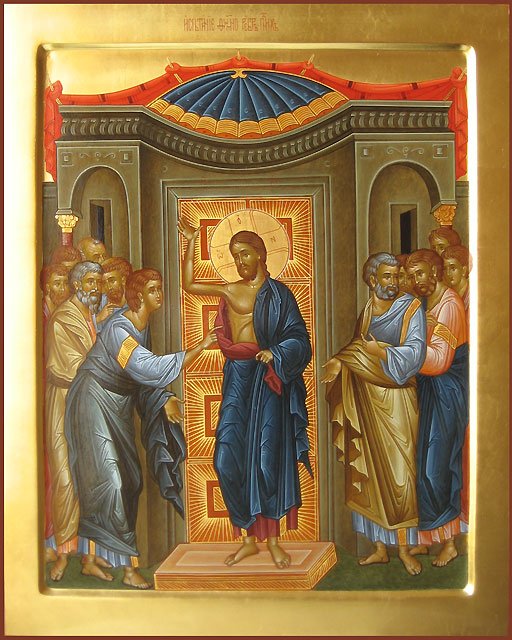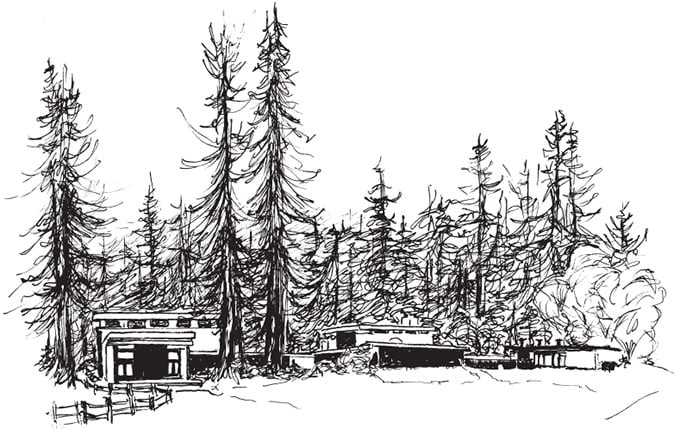“How do you know that Christ is risen in your individual life? In the life of any kind of faith community to which you belong? In your life with other people? In your prayer? Can it be in weakness, failure, confusion, messy and ambivalent situations, weariness and emptiness of spirit?” (p.8-9). These questions are posed by Sr. Maria Boulding in her book, her final book before she died of cancer, titled Gateway To Resurrection. Here is this amazing woman of Stanbrook Abbey, a monastic and theologian who translated St. Augustine’s Confessions and his exposition on the psalms posing these questions to us, questions that bring our head into our heart. Her experiential and theological response to her own questions is that the Easter mystery is precisely experienced in ‘weakness, in failure, in confusion, messy, ambivalent situations, weariness, emptiness of spirit’. Christ transforms, Christ rises right in these very human places of suffering. There is no resurrection without the cross….the cross is the backdrop of the resurrection; resurrected life emerges out of the cross.
What, then, does this tell us about ‘faith’, about our ‘believing’? I know that when- ever I am faced with suffering situations, situations of turmoil or darkness that I immediately want to escape from it, and my faith begins to weaken, the waves of doubt begin to move in, questions of doubt prick at my mustard seed of faith. And this is ok! It is so striking that we have on this Second Sunday of Easter this gospel passage of Jesus appearing to the disciples with his wounds in the upper room… Jesus’ first words are ‘Peace be with you’ and what immediately follows is that he shows the disciples his hands and side…he shows his wounds. All this is saying, is it not, that Christ’s peace, resurrected life and love are not separate from suffering. As a collective body, this time, the disciples recognize Jesus and he repeats again the words: ‘Peace be with you’. Thomas is a helpful figure for us as we wrestle with believing…he is seeking some kind of proof or certainty and faith in this context will always elude him. He refuses to believe the witness of his community insisting that he must see for himself…perhaps he is learning how to see…perhaps is learning how to recognize the Divine not on his terms but on God’s terms…And Thomas says he will only believe if he can touch the Divine wounds!
The wounds are reminder of what ushers forth the resurrection….out of his wounds come forth the spring of living water….if we interface this with our own lives we see that we are stamped with this paradigm. No matter what our wounds are they are the place where Christ rises with healing love, with new life…In Christ these wounds are transformed into a new creation. Failure, frailty in the words of Maria Boulding “is the place where the paschal mystery happens….where Christ’s Easter is experienced as power” (p.18-19).
Sandra Schneiders in her book on the gospel of John, Written That You May Believe, notes that the author stays away from using the noun ‘faith’ or ‘belief’. What he does use over and over is the verb ‘believe’ and he uses this verb with varying grammatical constructions (p.52). In one construction, which is used thirty-six times, the literal translation from the Greek is to ‘believe into’. We would normally translate this as ‘believe in’. ‘Believe into’: one can feel right away what this translation is doing: it is drawing us into the Divine mystery, ‘to believe into’ leads us ‘to live into’. ‘To believe into’ invites us to lean into, to live into the life of the Risen One who is always coming towards us in love and mercy. In using this construction, Schneiders says “the evangelist tries to capture the progressive entrance of the believer into the life of Jesus” (p.52). We are those ‘who have not seen yet believe’, those who are living into, led by faith in the risen life, in the One who embodies the Love that is stronger than death. The Risen One comes in different forms of grace…his Spirit is everywhere and ready to rise up in those vulnerable places of our hearts, of our communities, of our world.
To conclude: Fr. Jeremy Driscoll, wrote a series of essays titled “Monasticism and the New Evangelization”. Essentially he is putting the resurrection front and center of any talk of evangelization. For monastics he writes: “Monks need to be people who clearly live and witness to the fact that the Jesus who was is also the Jesus who is. Jesus isbecause he is risen from the dead” (American Benedictine Review, December, 2014, p.404). Our ordinary lives are to radiate the resurrected life, this life that pulsates within everything and that is not separate from the cross.
And Fr. Jeremy writes: “What ultimately preserves the world—that is, saves it—is precisely the fact that every piece of it shall have once been the particular place in terms of which the final message can be continually uttered: ‘He is not here, he is risen’” (p.410). And this risen life now burns in our hearts and calls us to witness in our believing, to be this word of evangelization: that Love has been victorious over death…that what saves our world is that Christ’s Spirit is now everywhere, enveloping us with mercy, creating life out of suffering and death.
Joseph the Just, Attentive to God’s Voice
“If you knew the gift of God…” Jesus said to the Samaritan woman. Today this gift is offered to Joseph in a dream. And Joseph welcomes it and shows us


